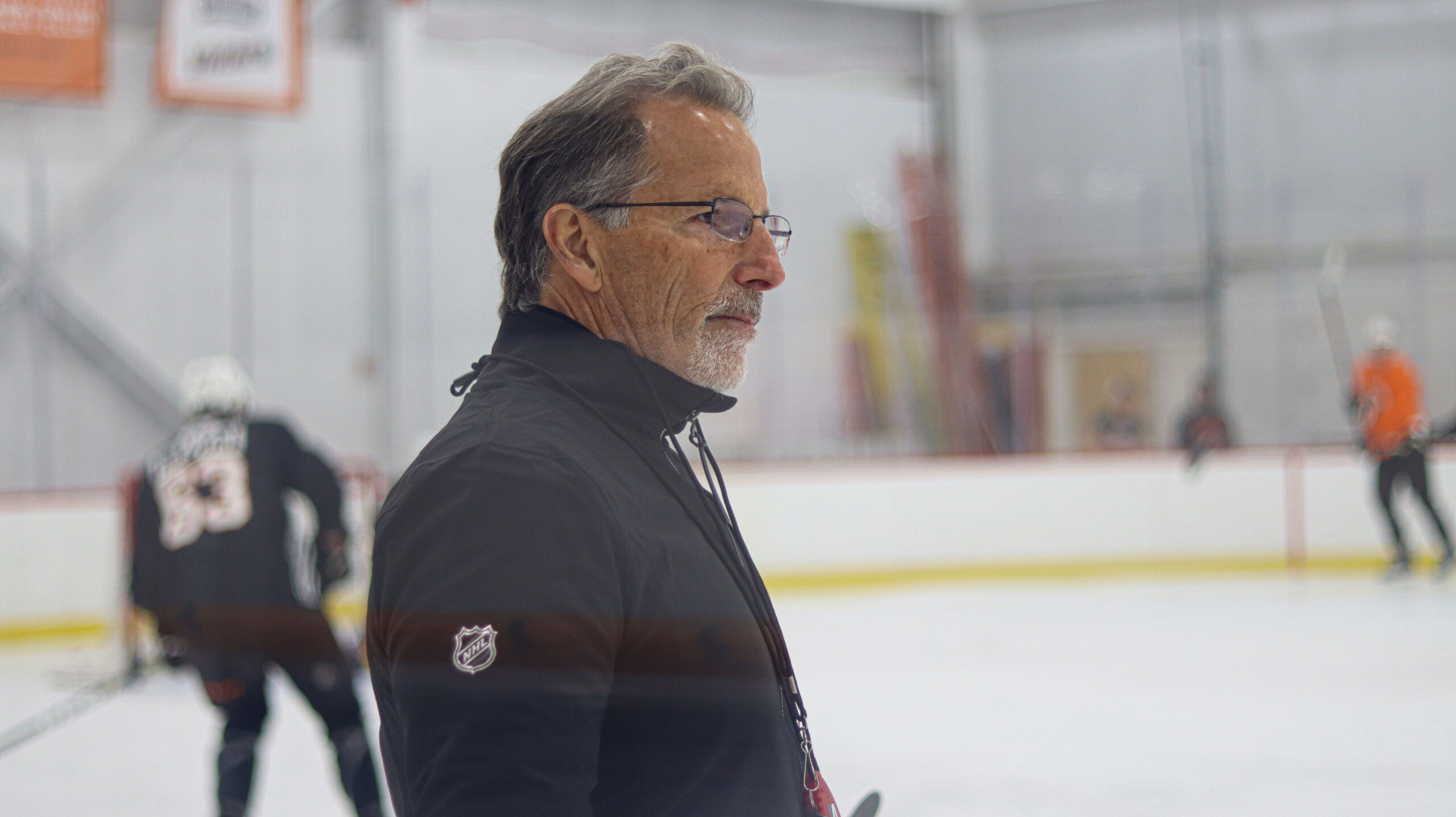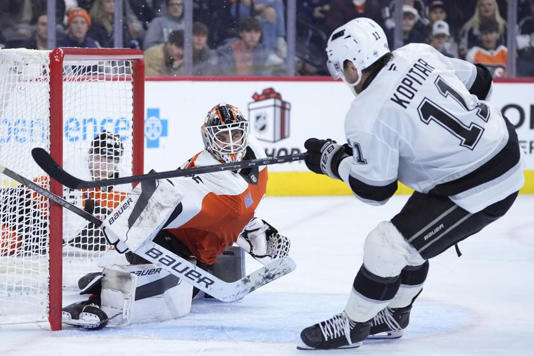The Philadelphia Flyers descent into misery started in the summer of 2011.
If you’re just now concerned about contracts, cap hits and pick conversion, I’d say you missed much of the trip, but that’s ok – you’re a fan, so am I.
The Flyers were the worst team in hockey in 2006-07 and in some respects, this is where the current slide begins.
You might remember back in 2007 the Flyers picked second in the draft, missing out on Patrick Kane and settling for James van Riemsdyk. You don’t need to be a fan of the league to realize the difference between these two players but it’s important we recognize they’re different. It’s going to come up again in about five years.
The team rebounded by making the Eastern Conference Finals in 2007-08 and would make the playoffs again in 08-09 before their Cinderella run in the 2009-10 season.
Honestly, I am skeptical of calling it a Cinderella run but sports clichés are cool.
As we know, the Flyers would find themselves in the Stanley Cup Finals in 2009-10 and would lose in six games to the Chicago Blackhawks.
Patrick Kane’s Chicago Blackhawks.
By the time James van Riemsdyk made his rookie debut in the 09-10 season, Patrick Kane was in his third NHL season. Kane had posted 72 points in 82 games as a rookie to claim the Calder trophy and followed it up with 70 points in 80 games as a sophomore. In the 2009-10 season he tallied 88 points in 82 games.
Van Riemsdyk as a rookie in amassed 35 points in 78 games. He finished 11th in Calder voting. Over his first 2 seasons in the NHL, Van Riemsdyk piled up 75 points in 153 games. The inability to maximize top draft picks will be important as we go further.
After the Cup run the Flyers make it to the second round in 2010-11, this is the fourth consecutive trip to the playoffs for the team after finishing dead last in 2006-07. It’s also the fourth consecutive season of 40 or more wins. This is where a plucky late first round pick from 2006 steals the hearts and imaginations of Flyers fans and Front Office folks.
Enter Claude Giroux.
Claude Giroux was drafted a year prior to van Riemsdyk and would play his rookie season in 2008-09. During that season Giroux scored nine goals and 27 points in 42 games, placing him 19th in Calder voting. Giroux’s 2010-11 season saw him score 25 goals and 76 points in 82 games, an emphatic declaration of his arrival as an NHL player. Giroux would finish 14th in Selke voting that year.
After what we’d be hard-pressed to describe as anything other than a positive run, the Flyers decided to make changes.
In the summer of 2011, after six years with the club, the organization decided to part ways with Mike Richards and Jeff Carter, effectively turning the franchise over to Claude Giroux. The trades would bring back a 2007 first round pick, Jakub Voracek, 2007 second round pick, Wayne Simmonds, a 2009 first round pick, Brayden Schenn, and a 2011 first round pick that ended up being Sean Couturier.
The Flyers would roll into the 2011-12 season with a new face for the franchise and feature a bevy of highly regarded top prospects. Couturier would go from draft to debut and finish the year 9th in Calder voting and 41st in Selke voting. Giroux would finish 4th in Hart voting and 21st in Selke voting.
The Flyers would again make the playoffs, losing in the second round. Their fifth consecutive playoff appearance and the fifth consecutive 40+ win season.
Both the consecutive playoff appearance and 40+ win season streaks would end here.
The long slow side down would begin…whether you noticed or not.
Meanwhile, in Western Pennsylvania, the Pittsburgh Penguins were cashing in on a string of draft successes having landed Marc-Andre Fleury first overall in 2003, Evgeni Malkin second overall in 2004, and Sidney Crosby first overall in 2005. These Penguins would beat the Flyers in the 2007-08 Eastern Conference Finals and then lose to the Detroit Red Wings in six games in the Stanley Cup Finals.
The Penguins would rebound in 2008-09 and win the Stanley Cup, beating the Red Wings.
In 2009-10 the Penguins would lose in the second round to Montreal, watching Philadelphia challenge the Blackhawks for the Cup. They would lose in the first round in 2010-11 to Tampa and in 2011-12 to Philadelphia. This is to illustrate that even great teams lose games.
Now the Flyers at the end of 2010-11 certainly had issues. There were questions about how seriously some of the players took hockey versus having fun and the changes that were made may well have been necessary. The team was undeniably successful. Issues and all.
The newfangled Flyers emerging after the summer of 2011 never truly found team success. After making the playoffs in 2011-12 the team missed the playoffs in the 48 game 2012-13 season and fell short of 40-wins at a prorated 82 games.
What is important about the 2012-13 season is that Giroux becomes eligible for an extension. Three days before the Flyers extended Giroux, the Penguins gave Malkin an extension, signed on July 1, 2013. Over the years leading up to his extension, Malkin posted six point-per-game seasons, three 100-point seasons, a 50-goal season, and had won the Calder, Hart, and Smythe awards once while winning the Ross Trophy twice.
Malkin signed an eight-year, $76 million dollar contract with a cap hit of $9.5 million dollars.
Paul Holmgren signs Claude Giroux to a new eight-year contract on July 4.
Giroux had emerged as the new face of the franchise in the 2011-12 season as he posted 28 goals and 93 points in 77 games and finished 4th in Hart voting that year. He followed it up with 13 goals and 48 points in 48 games in 2012-13. Inarguably good numbers.
Now the inarguably bad numbers, Holmgren’s offer was eight-years, $66.2 million dollars. The contract ran from 2014 through 2022.
The Cap Hit? $8.275 million dollars.
This followed Pittsburgh having also signed Sidney Crosby to an extension in July of 2012. Crosby had already won a Stanley Cup, was a point per game player each of the seven years leading to the extension and had recorded four 100-point seasons. Crosby had also already won the Hart, Ross, and Richard awards. His 12-year $104.4 million dollar deal carried a cap hit of $8.7 million dollars.
Holmgren had given Giroux just $425,000 less than Crosby in cap hit and just $1.225m less than Malkin based on just two point-per-game campaigns.
The Flyers would double down on bad top end contracts in the summer of 2015. Ron Hextall, having replaced Paul Holmgren, would extend Jakub Voracek for eight years and $66 million dollars, a cap hit of $8.25 million. This contract was written on the strength of an 81 point campaign during the 2014-15 season and a 46 point in 48 game season in 2012-13. Voracek’s best seasons in an otherwise nondescript seven-year career to that point.
For Flyers fans it was exciting times.
Giroux was undoubtedly talented – but the Flyers invested to heavily and too quickly in top end players. Management tried to bleed the bottom of the roster to make up for it.
Few in Philly have ever been comfortable admitting this. Instead passing off first round exits as a tantalizing taste of what could be if Giroux and Voracek could get a little help. All the while ignoring the thumb on the scale holding back the kind of adds the roster really needed.
The Philadelphia Flyers are where they are today because middling “success” results in middle of the pack picks and overspending. Had the Flyers timed out the Giroux era in the same six years they gave Jeff Carter and Mike Richards, the rebuild would have started in 2016 instead of 2021.
You see, Flyers fans refused to turn the critical eye upward, it was always some middle-six forward, some bottom pair defensemen that had let everyone down.
That was the last decade. That’s what you missed while looking out the window.
Anthony Chatburn is a Contributor for HW Hockey
Photo:
Listen to High and Wide Radio on Apple Podcasts or Spotify
For more Flyers coverage, follow and subscribe to High & Wide Hockey on Facebook, Twitter, and Youtube
Discover more from HIGH AND WIDE HOCKEY
Subscribe to get the latest posts sent to your email.



